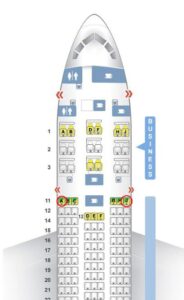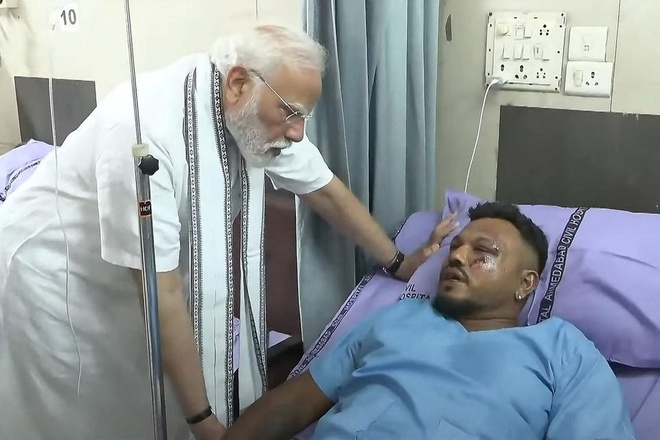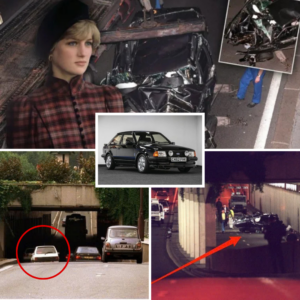On a rain-soaked morning in the coastal town of Diu, India, a solemn procession wound through the streets, led by a man whose very presence seemed to defy fate. Vishwash Kumar Ramesh, a 40-year-old British national, carried his brother Ajay’s coffin on his shoulder, his face marked with bandages and his steps heavy with both physical pain and unimaginable grief. Just six days earlier, Vishwash had walked away from the wreckage of Air India Flight AI171, a London-bound Boeing 787-8 Dreamliner that crashed seconds after takeoff from Ahmedabad, India, on June 12, 2025. The disaster claimed the lives of 241 passengers and crew, including Ajay, and at least 30 people on the ground. Vishwash, the sole survivor, emerged from the catastrophe with minor injuries, a story of survival that has captivated hearts and raised questions about miracles, fate, and the fragility of life.
The Crash That Shook the World
The tragedy unfolded in the early afternoon of June 12, 2025, at Sardar Vallabhbhai Patel International Airport in Ahmedabad, a bustling city in India’s Gujarat state. Flight AI171, destined for London’s Gatwick Airport, was carrying 230 passengers and 12 crew members, a diverse group that included Indian, British, Canadian, and Portuguese nationals. Among them were Vishwash and his younger brother Ajay, who had been visiting family in India and were returning to their home in Leicester, England. The brothers, seated just a few rows apart, were likely filled with the usual mix of excitement and fatigue that comes with a long journey home.

Moments after the plane lifted off at 1:17 p.m. local time, something went terribly wrong. The aircraft, a Boeing 787-8 Dreamliner, climbed to a mere 625 feet before it faltered. Witnesses later described a loud noise, followed by the plane’s sudden descent into a residential area known as Meghaninagar. The jet slammed into a medical college hostel, erupting into a fireball that sent plumes of black smoke billowing into the sky. The impact was catastrophic, killing nearly everyone on board and at least 30 people on the ground, including five medical students. Emergency responders rushed to the scene, battling flames and debris to search for survivors, but hope seemed lost amid the devastation.
A Miraculous Escape
Against all odds, one man emerged from the wreckage. Vishwash Kumar Ramesh, seated in 11A—an emergency exit row near the left wing—found himself alive in a scene of chaos and destruction. The plane’s fuselage had split open near his seat, creating a narrow gap through which he managed to crawl. Despite burns on his arm, cuts on his face, and bruises across his body, Vishwash unbuckled his seatbelt, pushed through the opening, and stumbled into the open air. Video footage captured him limping away from the crash site, his white shirt stained with blood and dirt, as flames roared behind him. An ambulance driver, one of the first responders, guided him to safety, initially mistaking him for a local doctor caught in the disaster.

Vishwash’s survival has been described as nothing short of miraculous. Aviation experts have speculated that his seat’s proximity to an emergency exit and the plane’s angle upon impact—nose-up, with his section landing on the ground floor of the hostel—may have given him the critical seconds needed to escape before the fire consumed the wreckage. Yet Vishwash himself has expressed bewilderment at his survival, haunted by the memory of seeing others, including cabin crew and passengers, perish before his eyes. His immediate concern, even as he was rushed to Ahmedabad Civil Hospital, was for his brother Ajay, who had been seated in a different row and did not make it out.
The Weight of Survivor’s Guilt
In the days following the crash, Vishwash remained in the hospital, treated for burns, lacerations, and multiple injuries. Medical staff described him as disoriented but stable, a man grappling with both physical pain and the emotional toll of surviving when so many others, including his brother, did not. His family, including his wife and son in Leicester, rallied around him, while his cousin in India spoke of the family’s devastation. Vishwash’s thoughts, however, were consumed by Ajay, a man described by loved ones as kind, generous, and inseparable from his brother. The brothers had shared countless memories, from childhood in India to building lives in the UK, and the loss was a wound that cut deep.

On June 17, 2025, Vishwash was discharged from the hospital, his injuries still visible but his determination stronger than ever. Hours later, he joined the funeral procession for Ajay in Diu, a small coastal town where 14 other victims of the crash also hailed from. The scene was one of profound sorrow, with mourners packing the streets despite the lashing monsoon rain. Vishwash, his face partially covered in plasters and his arm bandaged, took his place as a pallbearer, carrying Ajay’s flower-adorned coffin alongside relatives and friends. His mother, dressed in a blue sari, walked beside him, her grief mirrored in the faces of those around her. The procession moved slowly, a somber parade through a town united in mourning, as Vishwash appeared lost in his own thoughts, the weight of survivor’s guilt evident in his every step.
A Community in Mourning
The funeral was not just a farewell to Ajay but a reflection of the broader tragedy that had struck Diu and beyond. The crash had claimed the lives of entire families, young couples, and dedicated professionals, including the plane’s captain, who had issued a desperate “mayday” call moments before the disaster. Across India and the UK, families awaited the identification of their loved ones, a painstaking process that relied on DNA testing and left many in limbo. In Diu, the community came together to honor the victims, their shared grief a testament to the scale of the loss. Other funerals took place across the country, each a reminder of the lives cut short in what has been called one of India’s worst aviation disasters in decades.

Investigators from India’s Aircraft Accident Investigation Bureau, with support from the UK, the US, and Boeing, have begun piecing together the cause of the crash. Preliminary findings suggest the plane may have suffered a loss of thrust, with the emergency ram air turbine—a backup power system—deployed during takeoff. The black boxes, including the cockpit voice recorder and flight data recorder, are being analyzed for clues, but answers may take months or even years. For now, the focus remains on supporting the families and repatriating the remains of victims, including 52 British nationals, to their home countries.
A Story That Resonates Globally
Vishwash’s story has captured the world’s attention, not only for its miraculous nature but for the raw humanity it reveals. His escape from the wreckage, his immediate concern for his brother, and his quiet strength at the funeral have resonated with people far beyond India and the UK. In Leicester, where Vishwash has lived since 2003, the community has rallied around his family, offering support and prayers. Social media has been flooded with messages of sympathy and awe, with many calling Vishwash’s survival a “miracle of seat 11A.” Yet for Vishwash, the miracle is bittersweet, overshadowed by the loss of Ajay and the trauma of witnessing so much death.
As he stood in the rain, carrying his brother’s coffin, Vishwash embodied both the resilience of the human spirit and the depth of its sorrow. His journey from the wreckage to the funeral procession is a testament to survival, but also a reminder of the cost of such tragedies. For those who watched the procession, whether in person or through video shared online, it was a moment that encapsulated the pain of loss and the strength to carry on. The world may never fully understand how Vishwash survived, but his story—and the brother he lost—will not be forgotten.




